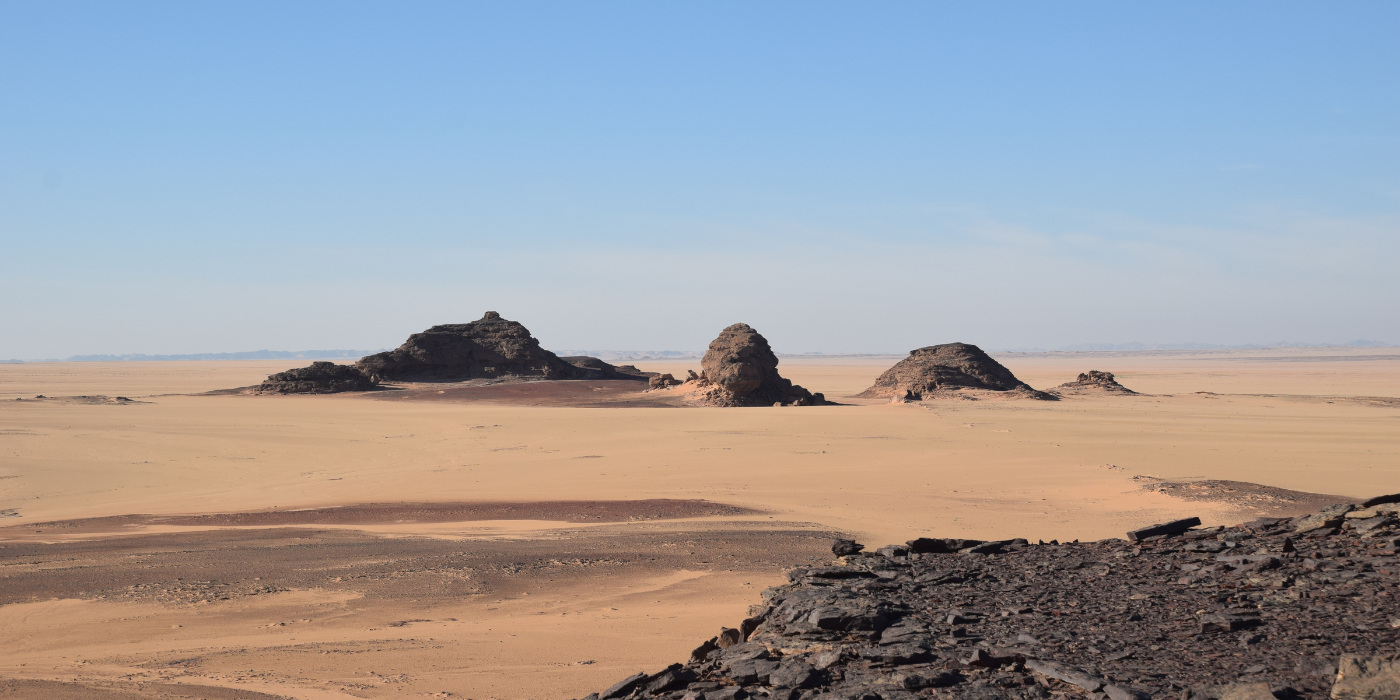Written on the walls of sites in the Atbai Desert in Eastern Sudan, prehistoric rock art tells the story of a very distant past. While the region today is achingly arid, the artwork implies it was once a lush, green land filled with water, pastures, and animal life.
Remarkably, the artwork only dates to around 4,000 years ago, suggesting this part of the Sahara Desert underwent a rapid and radical change in just the past few millennia.
In their new study, archaeologists at Macquarie University describe the discovery of 16 rock art sites in the deserts around Wadi Halfa, a city in northern Sudan near the border with Egypt.
Among the many figures depicted in the art, the researchers found illustrations of humans, antelopes, elephants, and giraffes. There was also the recurrent appearance of cattle – which is pretty astonishing when you consider the current hyper-arid climate of the Atbai Desert.
Today, this region receives almost no annual rainfall, making cattle pastoralism impossible. However, the rock art shows that cattle farming was a common theme of everyday life as recent as 3000 BCE.
“It was puzzling to find cattle carved on desert rock walls as they require plenty of water and acres of pasture, and would not survive in the dry and arid environment of the Sahara today,” Dr Julien Cooper, a researcher who led a team of archaeologists in 2018 and 2019 on the Atbai Survey Project, said in a statement.

Dry and desolate: today’s view of the Atbai desert near Wadi Halfa.
Image credit: Julian Cooper
“The presence of cattle in ancient rock art is one of the most important pieces of evidence establishing a once ‘green Sahara’,” added Cooper.
Between 15,000 years ago and roughly 5,000 years ago, Africa was doused by increased summer monsoon rainfall across the continent as a result of periodic variations in the Earth’s orbit around the Sun. Thanks to the downpours of rain, the continent was turned into a flourishing land of grassy pasture covered in freshwater lakes.
When the wet period ended, however, a drastic change was brought to the region’s landscape, as well as the many people and other animals who lived here.
“The Atbai Desert around Wadi Halfa, where the new rock art was discovered, became almost completely depopulated. For those who remained, cattle were abandoned for sheep and goats,” explained Dr Cooper.
“This would have had major ramification on all aspects of human life – from diet and limited milk supplies, migratory patterns of herding families and the identity and livelihood of those who depended on their cattle.”
The findings are published in The Journal of Egyptian Archaeology.
Source Link: New Discovered Rock Art Shows The Sahara Was A Radically Different Place 4,000 Years Ago